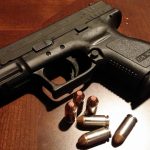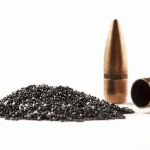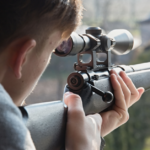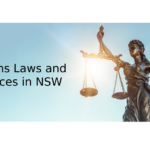The Ease With Which Criminals Acquire Firearms Renews Calls for Additional Safeguards

A recent investigative report suggests that, despite Australia’s stringent firearm control laws, safety gaps have enabled legally obtained firearms to slip into the hands criminal groups – renewing debate about the level of regulation, monitoring and control required to increase the likelihood that members of the community are kept safe from gun crime, whilst also ensuring the rights, interests and indeed livelihoods of law abiding firearm owners are protected.
One of the key debates is whether a national firearms register should be introduced, which is something that gun control advocates believe is necessary to sufficiently monitor firearm ownership, whilst being opposed by firearm lobby groups and many firearm owners on the basis it would be an unnecessary and likely ineffective form of additional regulation.
How Licensed Firearms End Up in Criminal Hands
The report suggests that some of the ways in which legally obtained firearms come into the possession of potential criminals include:
- Theft from Rural Properties: Even securely stored firearms are vulnerable: keys are exploited, safes broken into, or entry forced—leaving weapons exposed despite best efforts.
- Straw Purchases & Organised Networks: Individuals with clean histories legally buy firearms and then report them stolen—effectively transferring ownership to criminal networks. Organised crime plays a key role in orchestrating such diversions.
- Data Gaps Across States: Over the last five years, more than 9,000 firearm thefts have been reported—but inconsistent state data hinders full awareness. For instance, Queensland alone accounted for over 3,000 thefts between 2020 and 2024.
Two Sides of the Argument
As is often the case when it comes to firearms, there is heated debate over whether calls for further regulation are justified.
- Advocates for Strengthening Controls
- National Firearms Register (NFR): Law enforcement agencies and firearm control advocates argue that a functional national firearm registry is necessary to trace firearms across state borders, curb straw purchases, and help uncover trafficking patterns. Although agreed upon by states, the NFR’s rollout faces delays due to fragmented systems.
- Tightening Licensing Loopholes: Particularly in NSW, “permission-to-shoot” letters originally for recreational hunting can be purchased en masse, creating vulnerability to exploitation. Police now call for mandatory revalidation upon license renewal—a change already enacted in WA.
- Combatting 3D-Printed Weapons: The rise of homemade firearms, downloadable blueprints, and unregulated proliferation threatens to undermine control frameworks. Only NSW and Tasmania currently criminalise the possession of such blueprints.
- Historical Effectiveness of firearm Laws: The 1996 National Firearms Agreement (NFA), prompted by the Port Arthur massacre, demonstrated effectiveness: mass shootings halted for over a decade, and firearm deaths declined sharply following the buyback and regulatory overhauls.
- Concerns Over Restriction and Burden
- Impact on Farmers & Rural Users: Firearms are essential tools in agriculture for humane pest and animal control. Over-regulation imposes financial and operational burdens on small rural businesses.
- State Resistance and Lobby Pushback: Some firearm clubs and pro-firearm entities oppose increased regulation, framing firearm ownership as a valid recreational or livelihood activity. The tension remains between maintaining NFA principles and accommodating these interests.
- Effectiveness vs. Personal Liberty: While firearm regulation is generally effective, critics argue that some aspects (e.g., universal registration) burden responsible owners without providing a proportionate benefit. Disparities across states—like NSW allowing silencer use via permits—suggest uneven compliance and possible overreach.
Reform Debates: What’s on the Table
Currently under debate are the following potential reforms:
- Expedited NFR Rollout: Seen as essential for real-time firearm tracking and cross-border traceability. However, technical and bureaucratic hurdles—such as digitising paper-based registries—are delaying full deployment.
- Closing the “Permission-to-Shoot” Loophole: NSW and WA are pushing for stricter oversight: requiring new landowner consent letters at every license renewal, mirroring reforms already made in WA.
- Uniform 3D-printing Legislation: Regulatory inconsistency across states magnifies the threat of homemade firearms. Advocates urge national-level laws to criminalise blueprints and prevent easy weapon proliferation.
- Targeted Regulation Without Undermining Legitimate Use: Reform proposals focus on securing safety while preserving lawful uses by farmers, sports shooters, and hobbyists—often navigating sensitive economic and cultural considerations.
New South Wales–Specific Firearms Law
- “Right to Hunt” Bill Under Review: A controversial bill by the Shooters, Fishers and Farmers Party aims to enshrine a legal “right to hunt,” establish a hunting authority, and introduce bounty systems for feral pests. Critics, including Port Arthur survivor Walter Mikac, argue it risks rolling back decades of firearm-safety progress. The government denies that it will dilute core laws, such as bans on silencers or night-vision technology—but scrutiny continues.
- Permission-to-Shoot Letter Abuse: In one reported scam, a single rural property was fraudulently used to issue around 1,000 “permission-to-shoot” letters—tying many firearm licenses to one source, and raising alarms over licensing integrity. Police have since taken corrective actions.
- Blueprint Criminalisation for 3D firearms: NSW stands out for outlawing possession of digital blueprints for firearm fabrication under Section 51F of its Firearms Act—a rare but essential safeguard.
- Historical Precedent: Milperra Massacre Reform: After the 1984 Milperra massacre, NSW tightened its firearms act to require a “good reason” for licensing, closing earlier loopholes that allowed carte blanche access.
Human Stories: Faces Behind the Data
Adding to the debate are accounts of the ease with which legal firearms can be illegally obtained, as well as human tragedies, including:
- Criminal Exploitation: One inmate recounted:
“Honestly, the access is pretty easy. I could get access to a firearm within an hour of walking out of jail … no problem at all.” Organized crime and “straw purchasers” exploit vulnerabilities—purchasers with clean records buy firearms and then “report them stolen” to divert them illicitly.
- Tragedy and Loophole Fallout: The 2023 NSW father-son murder-suicide sharply underscored the lethal risk of lax “permission-to-shoot” licensing—a loophole currently under police scrutiny.
- Organized Theft: In a dramatic case, Toby Charles Gillis was jailed after stealing 42 firearms (valued at $60,000) from a fortified vault in 2023; six remain missing. The theft was motivated by financial desperation and involved sophisticated tools and planning.
- Extremist Ideology Intersection: The rapid rise of the sovereign citizen movement, which rejects state authority, has influenced individuals with revoked firearms licenses. A suspected shooter in the Porepunkah police killings exemplified this intersection of extremist ideology and firearm access.
- Lobby Power and Political Influence: The firearm lobby claims it’s “winning”—with legal firearm ownership surging. Groups like Shooters Union Australia are pushing back against reforms like the NFR, advocating broader firearm rights.
Snapshot: Australia vs. The World
| Country/Region | Ownership Controls & Licensing | Outcome & Notes |
| Australia | Strict licensing, genuine reason, waiting periods, renewal | Major drop in mass shootings and firearm deaths |
| United Kingdom | Very tight—handfirearm bans, inspections, interviews | Very low ownership and firearm-related deaths |
| Canada | Structured PAL/RPAL, background checks, partial registration | Moderate control, ongoing efforts to strengthen laws |
| Germany | Federation-wide strict controls, minimal allowances | Highly regulated and low violence |
| Switzerland | Permissive acquisition, regulated permits | Cultural context shapes balanced control model |
| USA | Broad access, fragmented state/federal laws | High violence, reform stymied by legal hurdles |
Australia’s firearms regime remains one of the strictest in the world.
Many believe additional safeguards including a national register are necessary to provide additional protections and keep the community safe, whilst law abiding gun owners and firearm lobby groups are of the view current protections are more than enough to fulfil this objective.






